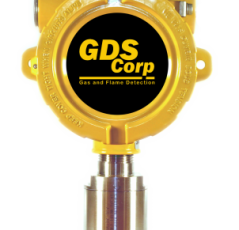In the oil and gas industry, workers are exposed to a variety of hazards on a daily basis. Among the most common and dangerous when it comes to manufacturing plants, offshore oil rigs, pipelines, and other facilities is methane gas, which if undetected can result in massive fires or explosions. However, as safety and technology have combined in recent years, there have been a number of methane sensors developed to ensure employees and others stay safe while on the job. If you are concerned about methane detection and need additional information as to which type of methane sensor would work best for your facility, here are some of the most important facts about various types of sensors.
Standalone Individual Sensors
If you have a large facility to monitor and want many sensors located at key points where methane could pose a danger, it may be best to install standalone individual sensors across your facility. Especially good in areas where large numbers of people congregate or work, these sensors are easy to install and can relay data to personnel in other locations to alert them in the event methane is detected. While these sensors offer the advantage of being located throughout the facility, they will need to be calibrated on a regular basis, which will require having an adequate number of personnel trained in the calibration process.
Multiple-Location Monitors
For those locations where a methane gas sensor that could monitor multiple locations would be more convenient, it may be best to purchase a multiple-location monitor. More expensive than individual standalone monitors, they can monitor up to 32 separate locations within a facility, making them much more convenient. In addition, they can also relay data from multiple locations quickly and accurately, making them a favorite of many companies. With data that can be accessed over the internet or through mobile devices such as smartphones or tablets, they offer high levels of safety and convenience.
Infrared Sensors
Considered the most up-to-date technology when it comes to methane sensors, an infrared sensor is well-known for being a high-sensitivity methane sensor. Requiring no oxygen to operate, infrared sensors can be used in a wide variety of places including offshore rigs, processing plants, and pipelines. Since they require no oxygen, they can be easily adapted to numerous work environments, and can operate very reliably under extreme environmental conditions such as heat, cold, humidity, or dust.
Catalytic Bead Sensors
While many companies have replaced these sensors with infrared sensors, catalytic bead sensors have a long track record of being very accurate and reliable. Popular with companies because they are inexpensive, they do need to be calibrated often and can also be prone to contamination from lead or sulfur. Because of this, they do need to be replaced more often than infrared sensors, which can increase their overall cost. However, because of their reliability in providing very accurate results, many companies that have used these for decades tend to be very reluctant to change course with their sensors.

